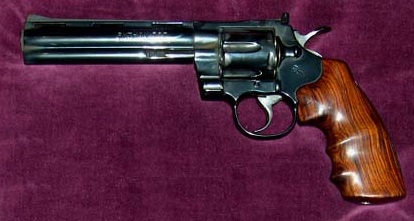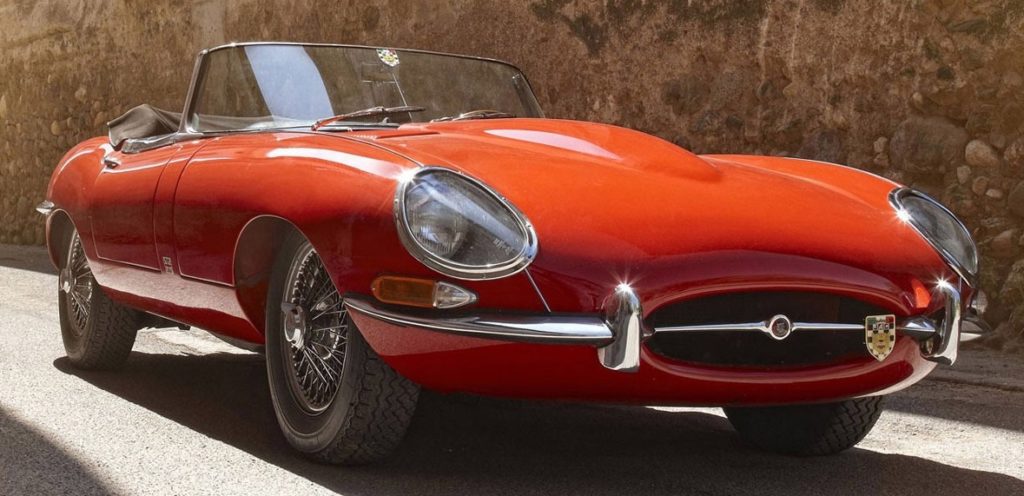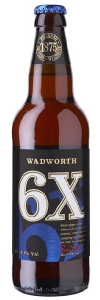Longtime (and generous) Reader DaleH sends me this call for help:
“I did some genealogy research and discovered my Scottish roots — for better or worse. That sparked my interest and I discovered the world of Scotch whisky. I was wondering about your thoughts on the subject. [quit that laughing — Ed] Single malt Scotch is very interesting and I don’t have to go blind to enjoy it. I suspect you might have an opinion or two?”
Like the title says, I do happen to have the odd opinion or so on the topic.
I first wrote about this topic back in May 2006, so if everyone will indulge me, I’m going to reprint it below as I think it may answer most of Dale’s questions:
I drink Scotch in three ways:
1. Single malts (sipping). Neat, no ice, with a glass of water consumed on alternate sips. This has less to do with style than it does with my frigging gout. I refuse to dilute the lovely stuff in my mouth, but I don’t mind diluting it in the stomach. My favorite single malts are typically from the Speyside region, and I’ll drink pretty much any single malt from those distilleries, but my absolute favorite is The Macallan 25-year-old, with Glenmorangie 10-yr-old as my “everyday” choice. For a “change”, I’ll drink The Dalmore 15-yr-old, which like Glenmorangie is a Highland malt.
Also in the cabinet right now are all the aforementioned (except the Macallan which I finished off a couple months ago [sob] ), plus Glenfiddich 18-yr-old and Talisker 10-yr-old, for those with different tastes to mine. When Mr. FM comes to visit, I usually lay in a few bottles of Laphroiag, his favorite. (Of late, he’s taken to drinking Irish whiskey, but we’re still friends.)
2. Blended (thirst quenching, or at parties). J&B, ice and water — and only J&B. Forget even offering me anything else. No J&B, and Kim drinks something else altogether, like gin. I actually dilute my J&B quite substantially — that gout thing again — and this also allows me to drink for longer periods of time before intoxication sets in.
3. As an after-dinner liqueur. Here I prefer the smoky, peatier singles like Laphroiag or Talisker, because I’m only going to drink one, and I can take my time in the drinking of it.
I’m not a Scotch snob, by the way, even though the above may make me sound like one. My tastes and favorites have come after some fairly extensive errrr trial and experimentation, and like in many areas of my life, I see no reason to change something with which I’m comfortable, and which has come about after considerable experience. I’ve tried most of the major single malts available internationally, and a couple available only in Scotland, but I’ve come to settle on the above because, well, I love their taste.
The wonderful thing about Scotch in general, and single malts in particular, is that it doesn’t matter how you drink it: that distinctive taste will always shine through. (However, I pretty much draw the line at drinking single malt with, say, Diet Coke, because that’s just barbaric — and once you mix any Scotch with Coke, the subtle differences between brands and types pretty much disappear, making the choice of a single malt under those circumstances just pretentious. But hey, if that’s how you want to drink that 40-yr-old Talisker…)
Just be aware that adding water to a single malt doesn’t just dilute the taste, it may change it completely. I find that this is especially true of some Highland malts. Some people happen upon such a taste, and thereafter prefer to drink their favorite single that way. Your call.
Still on the subject of taste, some say that coastal distilleries’ malts are different from those made by inland distilleries because of the salty sea air. I can’t taste it, myself, but I’m not a seasoned Scotch drinker, really.
Finally, it’s a common mistake to assume that the older the malt, the better the whisky. Some malts taste better in their “rawer” state — the malt becomes more bland as it ages — whereas others need the time to “mature” into smoothness. It’s all about your taste and preferences.
Afterthought: It occurred to me that not everyone might be familiar with the Scotch thing, incredible as that may seem. So, for the benefit of anyone who might be interested in pursuing the drinking of Scotch as a career (as so many have), here are a few pointers.
Single malts are the exclusive product of one distillery, made from barley. They will be bottled and sold as such, or else sold to other distillers to be blended with other malt- and grain whiskies (in closely-guarded secret and “proprietary” recipes) to produce “blended” Scotches such as J&B, Haig, White Horse, Bell’s, Cutty Sark and so on.
Blended malts are malts from different distilleries, sometimes called “vatted” malt. (The wonderfully-named “Sheep Dip” is a blended malt. Also, if the brand contains the words “Pride of”, or “Poit”, chances are it’s a blended malt.)
Proprietary (blended) Scotches are also broken into blended grain (grains from other distilleries) and blended Scotch (malts and grains from different distilleries). The actual number of distilleries used can be large, and the actual mix a secret — hence the term “proprietary”. J&B, for example, uses the product from forty distilleries (and almost none from Islay, which is why it’s one of the smoothest Scotches on the market). Johnny Walker Red contains malts from 35 distilleries, and grains from 5 others.
As a rule of thumb, the higher the malt proportion (30%+) in the blend, the more expensive the Scotch. The most expensive (sometimes called premium) blends are at least 40% malt (e.g. Johnny Walker Black, Chivas Regal). The “premium” can also be a factor not of the malt/grain mix, but of the number of malts used — the lower the number of malts in a brand, the more expensive it will be.
Single-grain Scotch whisky is rare (Black Barrel and Loch Lomond being the most famous).
(For all the info on Scotch whisky brands you’re ever likely to need, go here.)
The age of a single malt is denoted by the time it spent maturing in its cask: once bottled, it ceases to age altogether. If you see “single cask” on a single malt’s label, it means it came from one cask exclusively and was not mixed with whisky from other casks within the same distillery. Usually, this variant is hideously expensive, for not much more flavor — we’re well up the curve of diminishing returns, here.
Now for some pointers on the distilleries and their brands. The list is by no means complete (there are dozens of distilleries in Scotland — here’s a map), but I have actually tried all the ones I’ve listed.
The malts differ by region (sometimes by even smaller geographic differences) because of the different waters used, and in the distilling processes. I’ve made a few generalizations, however, just to give people an idea.
One last note: when you see a “The” before a single malt’s name, it’s not generally an affectation. Sometimes, the name is an area, not just an actual distillery (eg. Glenlivet), and “The” is usually added to denote either that it’s a single malt, or that it comes from the distillery of that name.
Speyside whiskies have a smoother taste, lighter flavor and softer aroma than most other Scotches. They are distilled, as the name suggests, in distilleries which are found along the River Spey on the northeast side of Scotland. Some of those distilleries (there are at least twenty major ones) are: Knockando, Glenlivet, Aberlour, Balvenie, Glenfarclas and Macallan.
Island/Islay whiskies come from the islands on the west- and north coasts of Scotland. Typically, they are much heavier, more aromatic, peatier-flavored whiskies, and some of the distilleries are very well-known: Laphroiag (la-froy-yag, from Islay), Talisker (Skye), Ardbeg (Islay), Highland Park (Orkney) and Bowmore (Islay).
Highland whiskies come from the north of Scotland (sometimes split into northern and southern Highlands). They tend to be darker than the Speyside malts, but not as peaty as the Island ones. Brands include such names as Dalwhinnie, Glen Ord, Dalmore, and Glenmorangie.
Lowland whiskies come from points around the Edinburgh – Glasgow axis, and there are really only two major ones: Rosebank and Glenkinchie (which is the main ingredient of Dimple Haig). I’ve tried Rosebank and didn’t really like it that much, but others (not put off by the “Lowland” appellation) swear by it.
Some factoids:
-
- Glenmorangie is the #1-selling single malt in Scotland.
- Glenlivet is the #1-selling single malt in the world.
- Glenfarclas is the strongest “production” single malt sold.
- The Famous Grouse is the most popular Scotch in Scotland (it’s blended, not a single).
- Johnny Walker Red (also a blend) is the most popular Scotch in the world (and I find it completely undrinkable).
- Johnny Walker Black (also a blend) is the most popular “premium” Scotch in the world.
- Chivas Regal (also a premium blend) is the most overrated Scotch in the world (okay, that’s just my opinion — OMD).
What amazes me after 15 years is how little my opinions have changed on the topic. But that’s pretty much true about everything, really. A few examples:






Still my favorites, after all these years…

A number of years ago, I got started on The Balvenie Doublewood 12 year. Tasty stuff, and not expensive at $35 back then.
It’s $70 a bottle now, so it’s in the “when I have a bunch of extra money” category.
Many prices have doubled, tripled, quadrupled or more. I remember when you could get a Ruger 10 22 Rifle new for just under $ 200 bucks. Good luck now.
Many vehicles could be had brand new, with the new car smell, for around $ 25,000 about 20 years ago. I remember for a decent small SUV about 20 years ago, mid twenty thousand pricing. Used in good shape, $ 10,000 or less. Not even close now in 2021, its about double or more.
Inflation sucks. Never seems like pay keeps pace with prices of goods and services.
I may get thrown off the site for this… but my favorite scotch for mixing is actually Kirkland blended scotch. $28 for 1.75 liters, and it tastes as good as stuff twice the price. Kirkland’s liquors are all white labeled from major producers, so some end up good, some not. This one is (mostly) consistently great.
Mostly – I’m told that when supplies from low from the main source that they will switch producers. I can immediately tell when they have, because the product is not nearly as good. That’s maybe 5-10% of the time, infrequently enough that I’m always willing to take the risk. If you get a mediocre one, just wait for the pallet to sell out and be replaced before trying again.
With Scotch, the key is consistency, which is why I don’t trust house brands. I keep some of Total Wine’s single malt (Glen Fohdry) to serve to visitors who aren’t seasoned Scotch drinkers, but hardly ever touch it myself.
> my favorite scotch for mixing is actually Kirkland blended scotch
They’ve had some single malts from time to time as well. I have a 19-year-old Macallan that came from there that’s pretty decent, and I think it only set me back $70 or so.
Sorry. You lost me on J&B.
That stuff is nasty.
Rotgut with a air of paint thinner.
It has been the root of all blind drunks followed by crushing hangovers for me.
I’m an Irish Whiskey or bourbon man myself.
Yes, but it’s a very mild-tasting rotgut with an air of paint thinner, which is why I drink it weak over masses of ice, or with lots of water. J&B is one of the few Scotches whose taste is actually improved by water.
Kim, have you tried the (Texas produced) Balcones Single-Malt? Technically not a scotch whisky (made in Texas, obviously) but I find it quite acceptable…
It’s on the to-do list, but way down. However, on your recommendation I’ll give it a shot, so to speak.
“Look at all this dirt. What are we going to do with it?”
“Let’s make booze with it.”
I don’t understand.
Scots. It’s what they do.
Right now, the tipple in my cabinet is Glenlivet 12 year old. It’s a good compromise between a great tasting single malt and not having to mortgage the house for a bottle or two. But Glenlivet also has a very tasty 14 year old that I will get if it’s on sale. Aberlour, Balvenie, Glenfarclas and Macallan are also good brands and each has a distinctive taste which I enjoy.
However – and I do realize that on this blog it borders on blasphemy – I also embrace the power of “and”. You see, I live in central Kentucky, right smack in the middle of Bourbon country. My grandfather was a master distiller for many years, so it’s in my blood. Right now, my go-to brand for Bourbon is Barton’s 1792 – distilled right down the road in Bardstown. But there are many great brands all around me. I also happen to like Jack Daniels Black Label which is a Tennessee whiskey.
(And trust me when I tell you that Scotch and Bourbon have very distinctive and very different tastes. As does Irish and Canadian whisky.)
The main thing is to try as many brands as you can and select based on what you personally like. Also, keep in mind that there are many people who will try to supervise your personal tastes. Ignore them. Drink what you like and be happy.
Dare I inquire – what’s your opinion of the Indian brands of scotch? Amrut, for example. I was astounded to find the Indians produce and drink scotch. A lot of it.
40+ years ago I foolishly thought (college you know) thinking I understood ‘whiskey’ and ‘scotch’ while drinking the blended stuff.
That was until I traveled for work and tried my first single malt scotch, I don’t remember what it was, but it was like silk and I fell in love. Your choices are pretty close to my own though I’m not a huge fan of the ones that have such a strong smokey peat flavor that I think I’m drinking the bog, unless of course they’re a gift.
Blends only if I’m mixing, but never ruin good single malt by mixing it with anything.
I do quite like your water sipping idea – what an excellent idea! I love scotch/whiskey and spicy food, unfortunately I have to negotiate with my digestive system these days.
But long ago I adopted the principle of Barry Fitzgerald as Michaleen Og Flynn in The Quiet Man.
“When I drink whiskey I drink whiskey, and when I drink water, I drink water.”
I tried some Indian whiskey when I was in Bangalore. To paraphrase someone else, it tasted like wet dog and made me want to fight someone.
Gawd knows what a second sip would have done to me.
Hah! My morning laugh secured! Thank you. I’ve had a lot of bad stuff over time sitting around campfires when everyone drags out their own particular brand of poison. And some amazingly good stuff which generally stays hidden till the newbies have drifted away to their tents and the old hands are solving the world’s problems after midnight
The worst being some cherry flavored cough syrup tasting swill that I couldn’t swallow, 2nd worst being some flavored corn ‘moon shine’.
A real West Texas cowboy ( a genuine riding a horse and chasing cattle sort ) I met years ago told me there were only two kinds of beer for him, “Coors beer and free beer”.
I’ve adopted that philosophy too with alcohol, if I didn’t bring it, and I can stand it, I won’t whine about the flavor.
Oh yeah, I agree. If it’s free, don’t whine.
That being said, Coors beer was one of the major disappointments of my young life. You see, when I joined the USN way back in the mists of time, Coors wasn’t sold in the east. (The movie “Smokey and the Bandit” was about that.) So when I met all of those other sailors from the western states, it was “Coors this…” and “Coors that…” and “…it is the best beer evah!” Everything else was horse piss. (Which, of course, begs the question: “How would you know?”)
Then one day, I got transferred to the west coast and got to sample my very first Coors beer. Please don’t misunderstand. It wasn’t bad. But it wasn’t really all that great either. It certainly didn’t live up to the hype.
Yes, I remember when you couldn’t get it east of the Mississippi.
It was magical! Everybody wanted people to bring a case back if they traveled where it was sold.
Then again back in the Northeast in those days flavor wise it had to compete with Budweiser or Narragansett or Schlitz. Hence the unwarranted attraction to the faux foreign American version of beers like Heineken.
In general watery, girly, American lager beers prior to the craft explosion.
A Canadian chap I knew described American beer as being “like making love in a canoe, because it’s f_cking close to water”.
“Fight someone” Must have been from an Irish distiller, then.
Charles Russell, the Montana Artist, told in his collection of stories, “Trails Plowed Under”, knew something about Whiskies and drinking to excess. One story told of a bar owner who sold “whispering booze”, as opposed to “fighting booze”, and pointed to his barroom as an example. The men were sitting, talking quietly. “This is ‘whispering booze’. Not a harsh word in a cask.”
I mostly drink bourbon but have tried a bit of Scotch.
I tend to like Highland park 12, Glenfiddich 12 and 14 (the 14 is aged in ex bourbon casks so it carries a hint of bourbon flavors). Laiphroig 10 is rather good but gets far less peaty as it ages. Lagavulin 16 is a rather nice peaty scotch.
Blends I have found Monkey Shoulder to be rather good and cheap.
Most of Total WIne’s store brands are dreadful.
JQ
Oh yeah, that Glenfiddich 14yo aged in the bourbon casks is some really good stuff. If I see it and have the scratch – it’s $70 a bottle round these parts – I’ll get it. A VERY GOOD friend gave me a bottle for Christmas.
It’s been a long time since I’ve had an 18 year old…
but back on the subject of Scotch, I love the variety and distinctive tastes of the various distilleries. My current favorites is an Islay, Laphroaig 10, but I recognize it’s not for everybody. Haven’t tried the 21, but it clocks in at $800 !
Hi Kim,
Great article on Whisky. About 25 years ago I was invited to a vertical taste test being run by Macallan Australia. We tasted the 12,15,18 and 21 year old classic sherry cask whisky’s. Back then the 18 year old was about AUD$125 and was my favourite go to drink. The 18 year olds are now about AUD$400 and more than I am willing to pay. The session was run by a marketing guy from Macallan Australia who talked a bit about the difference between putting ice in your whisky and putting some water in your whisky, say about 5 to 10% water. He preferred to put water in the whisky for 2 main reasons, 1. It took away that initial unpleasant whisky burn taste, and 2. It allowed the aroma and esters to “open up” and release that classic whisky aroma. Putting water in also meant that the drink tasted the same from start to finish and the proportion of water did not change in the glass.
In comparison putting ice in meant that the flavour profile could change as the ice melted and the percentage of water would increase compared to the whisky.
The Macallan is a great single malt, and my favourite, especially in winter when I tend to drink it for medicinal purposes.
Best Regards,
A fun coffee table book on Scotch is by artist Ralph Steadman, the illustrator of Hunter S. Thompson’s books, and is called Still Life With Bottle: Whisky According to Ralph Steadman. It’s out of print in hardcover, but paperback copies are $31.99 on Amazon.
I saw a bottle of Macallan 25yo in one of my local beverage shops a few years ago; the sticker price was over $900. The 21yo bottle next to it was nearly $400.
Macallans–real Macallans with proper age statements and matured in sherry casks, not the garbage that pops up in duty free shops or downmarket liquor stores–is magnificent. 12, 18, 25, and 30 YO. For me, the 18 is the sweet spot. Over that it’s not worth the price for a marginally-better whisky. In NJ, the 18 is now about $400-450, depending on the shop. The 25 is well over $1000 now, and the 30, ghods help you if you don’t have a black AMEX to pay for it. The 12 is not really worth the name-premium.
A great alternative is Grendronach 18 YO Allardice. About $150 and just oh, so tasty. I enjoy any good sherry cask matured (or finished) whisky with at least 10 years of age. Glenmo’s Nectar D’Or is wonderful, and Aberlour A’bunadh (cask strength) is just a stunner. I’m also a fan of the big Ardbegs from Islay, especially the cask-strength Corryvrecken and Uigeadail, and the late, lamented Airaigh Nam Beist. Bowmores are fine, but they’ve got a hint of cough drops (Fisherman’s Friend to be specific) in most of their bottles. It’s not unpleasant, to be honest!
As for Indian “Amrut Fusion,” that’s a real cracker of a bottle. They got it right. Just a gorgeous whiskey that I strongly recommend. And if you like the big peaty Islays, but not their price, get a bottle of Macarthy’s from Portland. I couldn’t believe how wonderful that was. I visited the distillery a few years ago and still have a couple of bottles left in my cabinet.
Speyside is just north of here, and as the stuff is not to my taste (no spirits are; wine is my tipple of choice) I will gladly be your designated driver. And you should have a serious tasting session – ahem discussion – with my brother and nephew.
I’m late to this party but I thought I would mention that I’m not a scotch drinker but I had to take a look around at the store. The 25-year-old Macallan here is $2200 for 750ml.
Kim, however did you afford a bottle in the first place? How will you ever replace it? Sell some hardware?